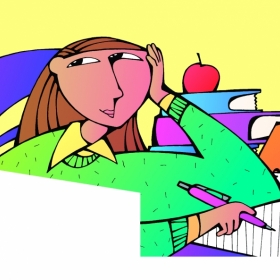Page 065 from

Start-Up Activity
Ask for a volunteer to explain what is happening in the illustration on pages 64–65. (Possible response: The writer, while sleeping, seems to be writing about an “outer-space” dream.) Then ask students to write about what they can remember from one of their own dreams or to write about something they would like to do. Have volunteers share their writing.
Then read and discuss the chapter introduction. Point out to students that the writing that they just completed is the very type that they can do in a journal.
Think About It
“Keep a diary. It’s a place to write things that happen, but also the kinds of feelings you’re having.”
—Jean Fritz

Start-Up Activity
Ask for a volunteer to explain what is happening in the illustration on pages 64–65. (Possible response: The writer, while sleeping, seems to be writing about an “outer-space” dream.) Then ask students to write about what they can remember from one of their own dreams or to write about something they would like to do. Have volunteers share their writing.
Then read and discuss the chapter introduction. Point out to students that the writing that they just completed is the very type that they can do in a journal.
Think About It
“Keep a diary. It’s a place to write things that happen, but also the kinds of feelings you’re having.”
—Jean Fritz
